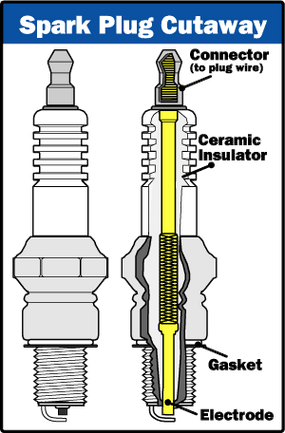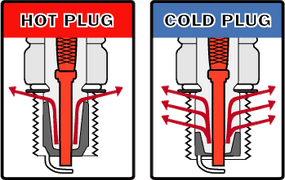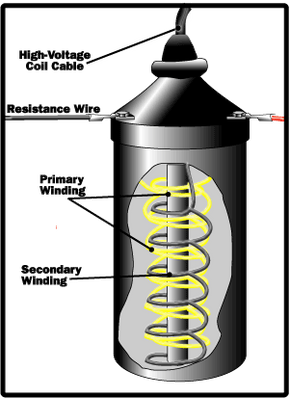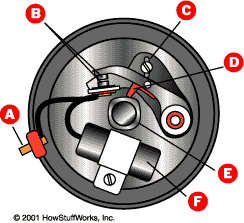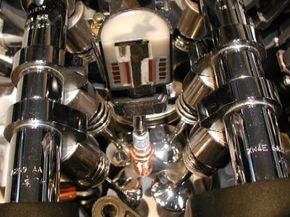The ignition system on your car has to work in perfect concert with the rest of the engine. The goal is to ignite the fuel at exactly the right time so that the expanding gases can do the maximum amount of work. If the ignition system fires at the wrong time, power will fall and gas consumption and emissions can increase.
When the fuel/air mixture in the cylinder burns, the temperature rises and the fuel is converted to exhaust gas. This transformation causes the pressure in the cylinder to increase dramatically and forces the piston down.
In order to get the most torque and power from the engine, the goal is to maximize the pressure in the cylinder during the power stroke. Maximizing pressure will also produce the best engine efficiency, which translates directly into better mileage. The timing of the spark is critical to success.
There is a small delay from the time of the spark to the time when the fuel/air mixture is all burning and the pressure in the cylinder reaches its maximum. If the spark occurs right when the piston reaches the top of the compression stroke, the piston will have already moved down part of the way into its power stroke before the gases in the cylinder have reached their highest pressures.
To make the best use of the fuel, the spark should occur before the piston reaches the top of the compression stroke, so by the time the piston starts down into its power stroke the pressures are high enough to start producing useful work.
Work = Force × Distance
In a cylinder:
- Force = Pressure× Area of the piston
- Distance = Stroke length
So when we're talking about a cylinder, work = pressure×piston area×stroke length. And because the length of the stroke and the area of the piston are fixed, the only way to maximize work is by increasing pressure.
The timing of the spark is important, and the timing can either be advanced or retarded depending on conditions.
The time that the fuel takes to burn is roughly constant. But the speed of the pistons increases as the engine speed increases. This means that the faster the engine goes, the earlier the spark has to occur. This is called spark advance: The faster the engine speed, the more advance is required.
Other goals, like minimizing emissions, take priority when maximum power is not required. For instance, by retarding the spark timing (moving the spark closer to the top of the compression stroke), maximum cylinder pressures and temperatures can be reduced. Lowering temperatures helps reduce the formation of nitrogen oxides (NOx), which are a regulated pollutant. Retarding the timing may also eliminate knocking; some cars that have knock sensors will do this automatically.
Next we'll go through the components that make the spark.


